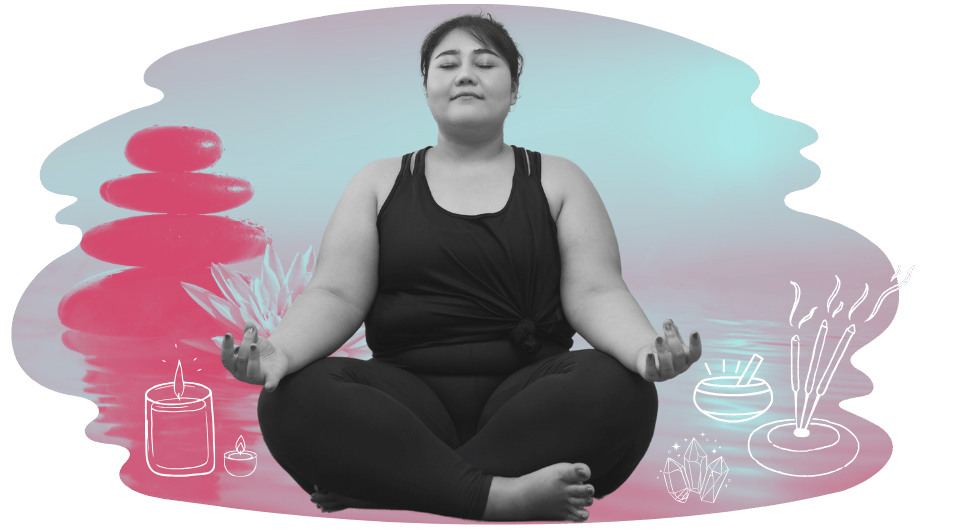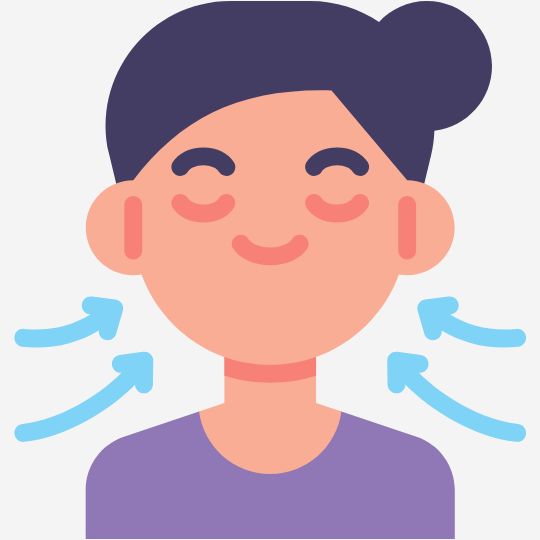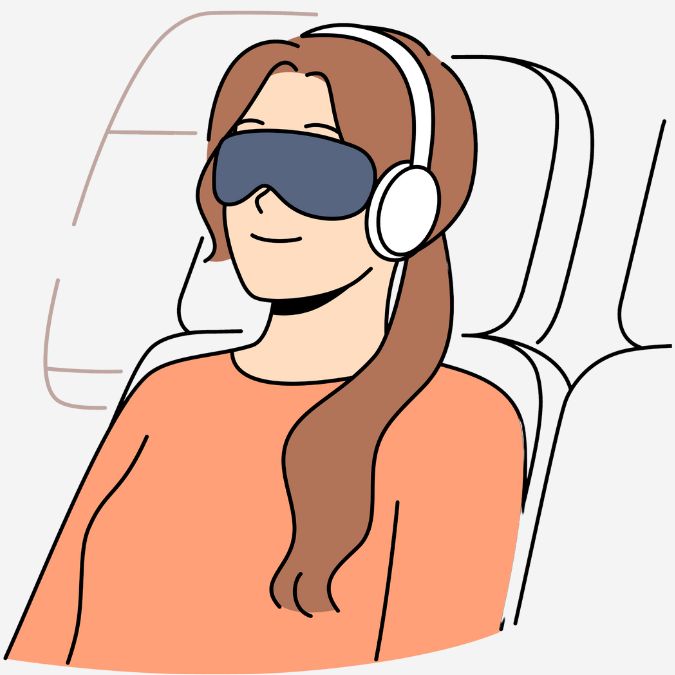Mindfulness
Mindfulness connects us through the present moment by connecting us with our ...
READ MEMeditation is a coping strategy with an impressive amount of benefits - and anyone can learn how to do it!

Side note: Meditation isn’t necessarily the same as mindfulness, because mindfulness requires being in the present moment (which isn’t always necessary for meditation).

Breathing is a really underrated way to quickly and easily change your mental state. Added bonus – you can do it literally anywhere!
Wanna know something really cool? Humans have a unique ability to control our breath. Some anthropologists think that this skill is actually what made us the top of the food chain when we were hunter-gatherers – controlling our breath gave us endurance when running, which allowed us to outlast animals we were hunting (they were fast but would overheat and get exhausted easily). It also allowed us to do things like dive underwater (which gave us more food options – hello seafood!)
Some breathing exercises to try:
This is where you imagine something in your mind’s eye. You can link simple visualisation to your breathing. For example, you might picture a beach. As the waves come into shore, you breathe in. As the waves go back out to sea, you breathe out. Visualisation also features in other types of meditation, like guided meditations (see below).
Did you know? Not everyone has a mind’s eye! People who can’t see pictures in their mind have something called ‘aphantasia’. It’s not a ‘bad’ thing, just an individual difference – and it affects about 3-4% of people. If you have aphantasia, give this technique a miss and try one of the other meditation techniques instead!

Our brain is constantly receiving sensory input (info from our eight senses – yes, there are actually eight, not five senses – mindblowing!) Sensory deprivation works by reducing or stopping info from one or more senses. It sounds fancy, but closing your eyes is a form of sensory deprivation. Blocking your ears is another one. Here’s a quick form of sensory deprivation that can help you feel calmer in seconds!
Sit comfortably. Close your eyes. Block your ears with your fingers or ear plugs. Breathe in slowly through your nose. On your exhalation, hum in your throat (or buzz like a bee). Repeat and see how it makes you feel.

This is where someone talks you through the meditation. It can include visualisations (getting you to imagine things with your mind’s eye), affirmations (positive statements), instructions (such as breath work or progressive muscle relaxation), or even imaginative or spiritual work, (such as clearing spiritual energy, or engaging with a spirit or higher being).
There are plenty of services and apps that offer guided meditations. Choose one that is a good length for you and suits your vibe. You can definitely start small (two-five mins) and slowly increase this over time (ok Zen master!) Start off with once or twice a week and see how you go. Studies have found that as little as 12 minutes of meditation a week over eight weeks have huge benefits!
There are many different types of chanting or sound meditations. ‘Transcendental meditation’ uses chants or mantras (words, sounds or phrases that you repeat out loud over and over again). Kirtan is a type of call and response meditation, where a leader says words, phrases or sounds, and you/other people repeat them. You can also use sounds for meditation, such as a Tibetan singing bowl, or drumbeats (side note: certain drumbeats per minute remind us of when we were in the womb and could hear out mother’s heartbeat - and our heart will even try to mimic certain beats, which can be either relaxing or energising). According to research, meditations using sound are some of the easiest and most effective to do.
Hate sitting still? DW, we get it – the good news is you can totally meditate while moving! Many cultures have moving meditations that are also religious and spiritual in nature. Trance dance has roots going back thousands of years in Northern Africa and the Middle East. Meanwhile, in Asia, practices like yoga and Tai Chi are a type of moving meditation. You can learn traditional moving meditation practices in a way that’s respectful towards the culture it comes from, or you can do something physical you enjoy, like putting on your favourite music and having a dance.
Mindfulness
Mindfulness connects us through the present moment by connecting us with our ...
READ MESelf-care
Looking after yourself is an important coping strategy. Let’s look at ...
READ MEHow to manage anxiety
Anxiety can feel overwhelming, but there are some simple steps you can ...
READ MECoping strategies: As told by you!
We hand the mic over to you to share the coping strategies ...
READ METalking helps! We’re here for you.
No problem is too big or too small.
We're here 24 hours a day, 7 days a week